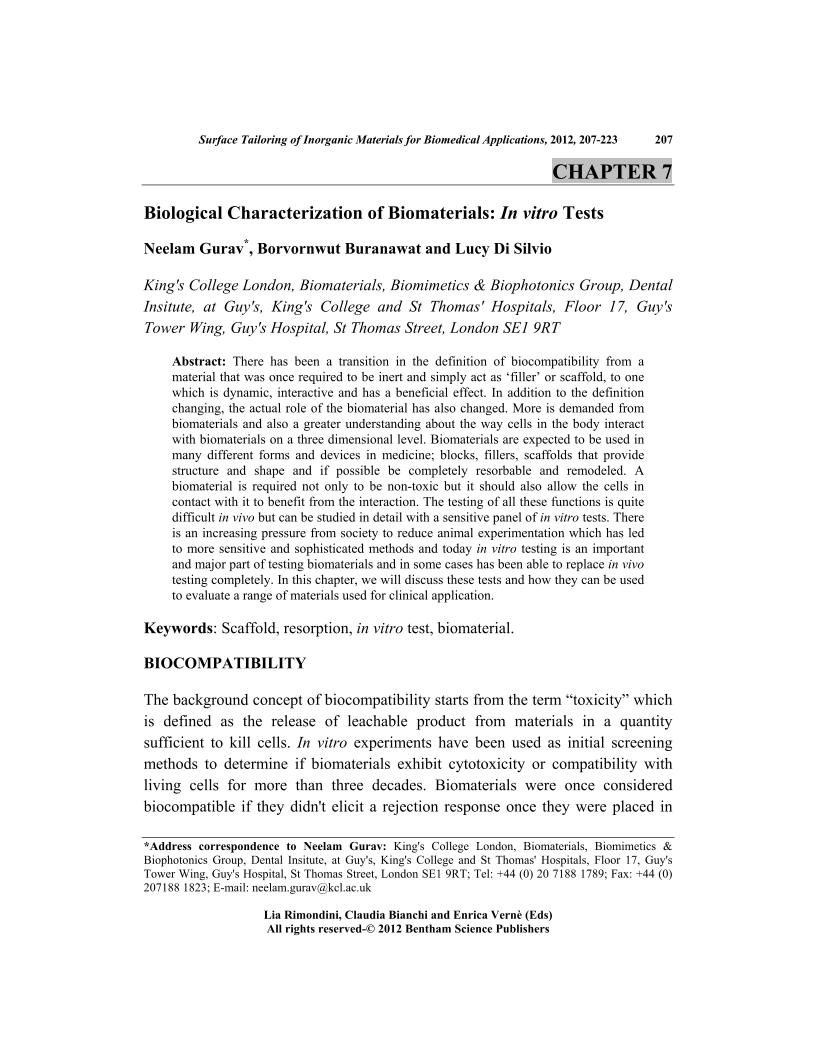Biological Characterization of Biomaterials: In vitro Tests

- Authors: Neelam Gurav1, Borvornwut Buranawat, Lucy Di Silvio
-
View Affiliations Hide Affiliations1 King's College London, Biomaterials, Biomimetics & Biophotonics Group, DentalInsitute, at Guy's, King's College and St Thomas' Hospitals, Floor 17, Guy'sTower Wing, Guy's Hospital, St Thomas Street, London SE1 9RT
- Source: Surface Tailoring of Inorganic Materials for Biomedical Applications , pp 207-223
- Publication Date: October 2012
- Language: English
Biological Characterization of Biomaterials: In vitro Tests, Page 1 of 1
< Previous page | Next page > /docserver/preview/fulltext/9781608054626/chapter-7-1.gif
There has been a transition in the definition of biocompatibility from a material that was once required to be inert and simply act as filler or scaffold, to one which is dynamic, interactive and has a beneficial effect. In addition to the definition changing, the actual role of the biomaterial has also changed. More is demanded from biomaterials and also a greater understanding about the way cells in the body interact with biomaterials on a three dimensional level. Biomaterials are expected to be used in many different forms and devices in medicine; blocks, fillers, scaffolds that provide structure and shape and if possible be completely resorbable and remodeled. A biomaterial is required not only to be non-toxic but it should also allow the cells in contact with it to benefit from the interaction. The testing of all these functions is quite difficult in vivo but can be studied in detail with a sensitive panel of in vitro tests. There is an increasing pressure from society to reduce animal experimentation which has led to more sensitive and sophisticated methods and today in vitro testing is an important and major part of testing biomaterials and in some cases has been able to replace in vivo testing completely. In this chapter, we will discuss these tests and how they can be used to evaluate a range of materials used for clinical application.
-
From This Site
/content/books/9781608054626.chapter-7dcterms_subject,pub_keyword-contentType:Journal -contentType:Figure -contentType:Table -contentType:SupplementaryData105

